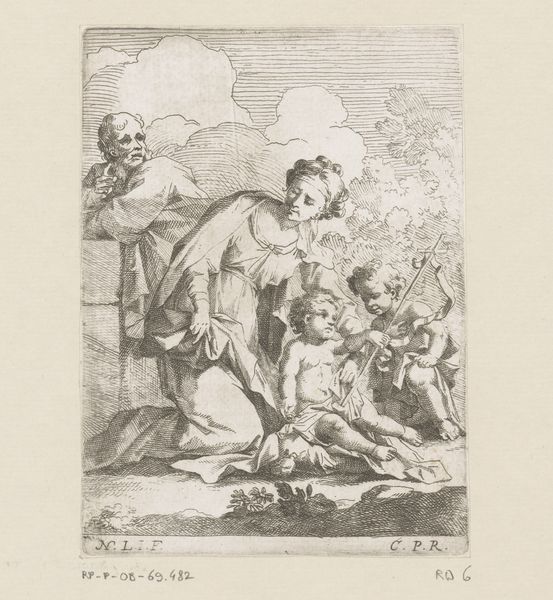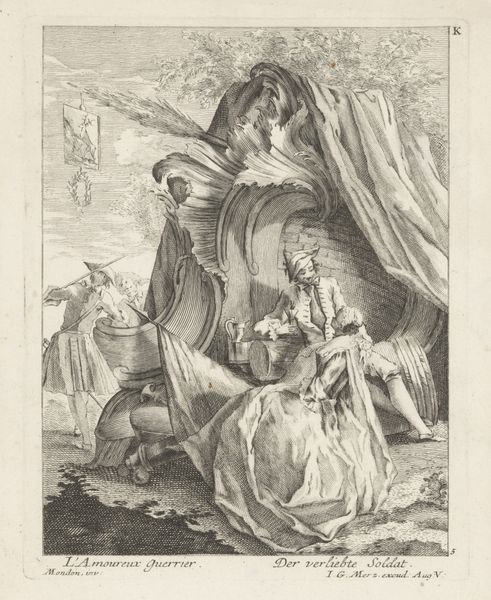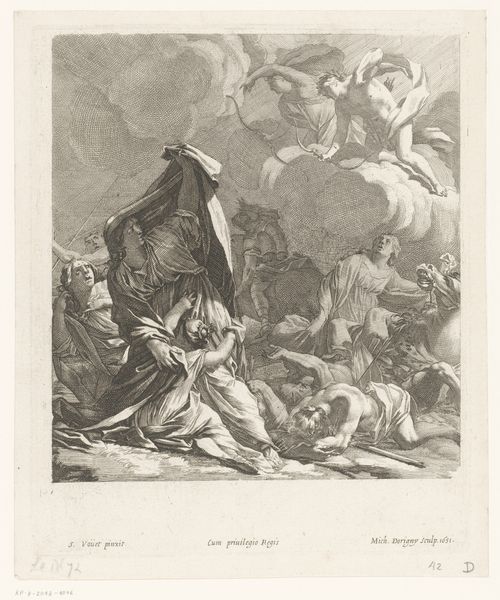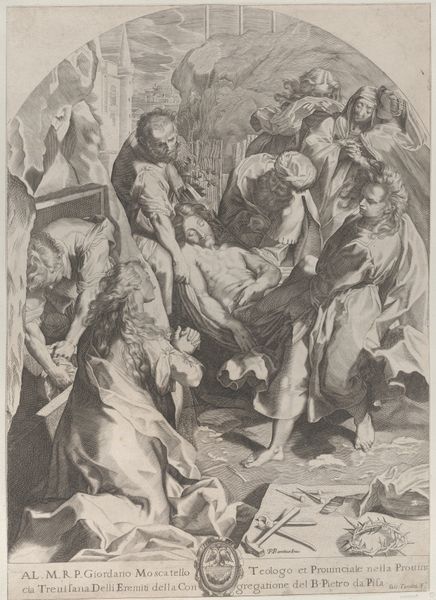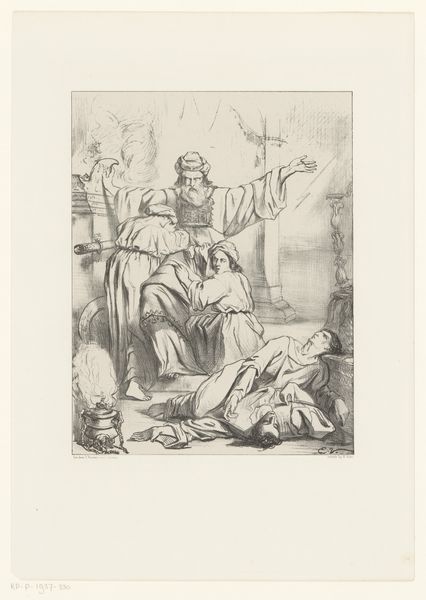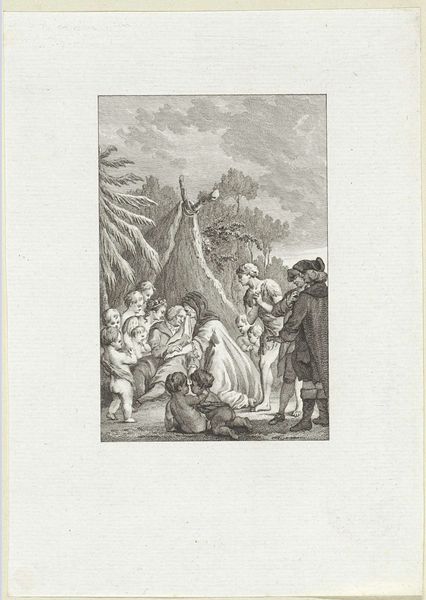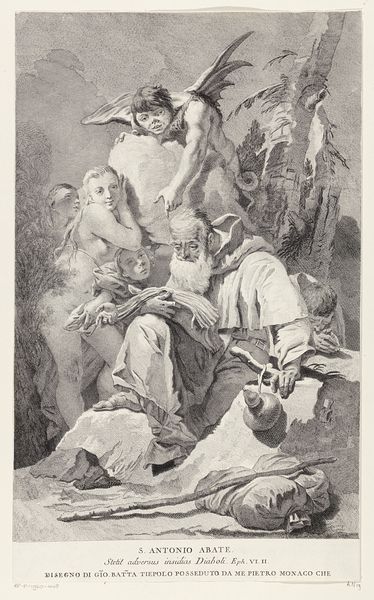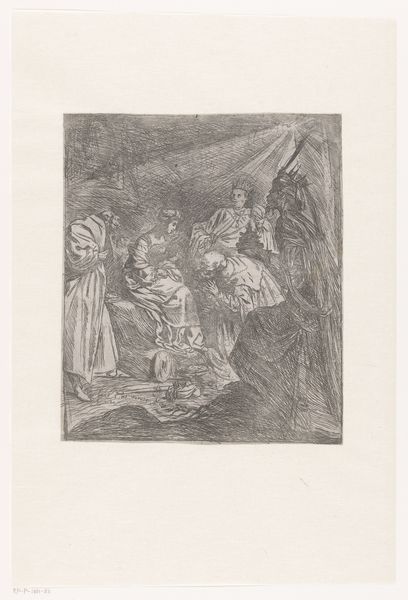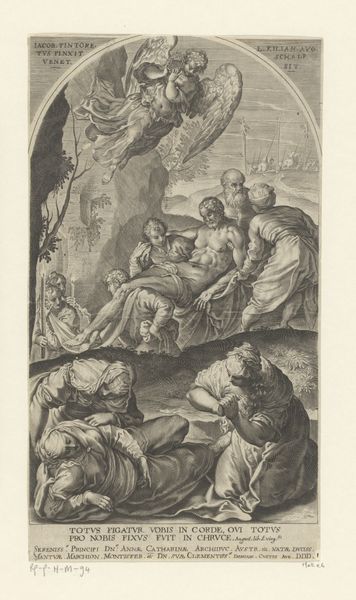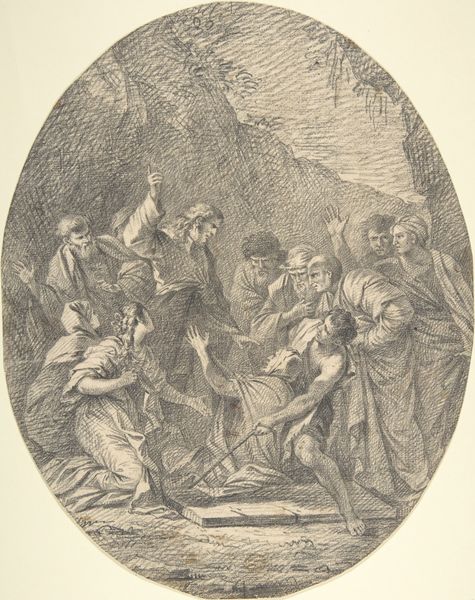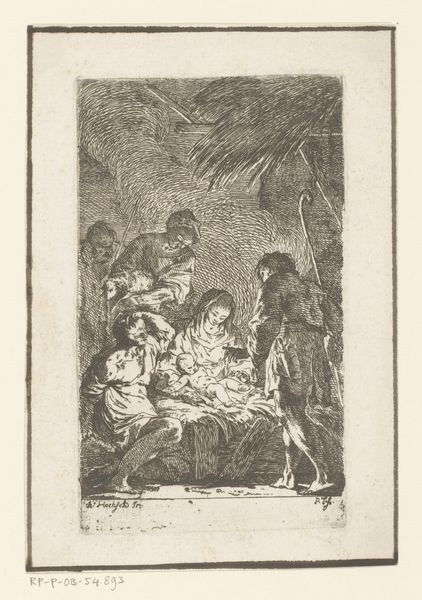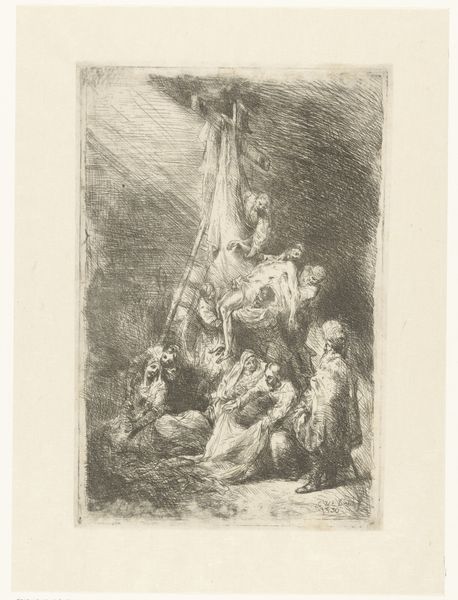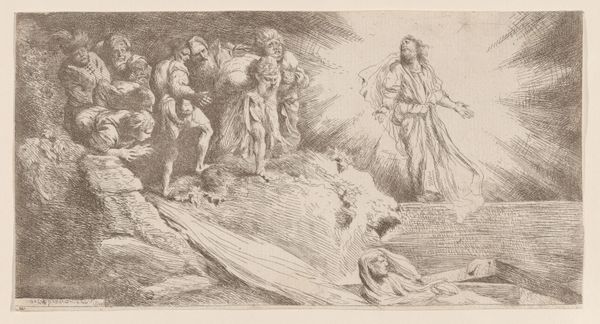
Dimensions: height 421 mm, width 324 mm
Copyright: Rijks Museum: Open Domain
Curator: Franz Anton Maulbertsch created this ink and pen drawing, "Christ and the Centurion of Capernaum", sometime between 1734 and 1796. What's your initial response to it? Editor: The rapid lines and layering create such a restless, haunted quality. It speaks to conflict, both inner and external. There’s a stark contrast in how the figures are rendered that definitely influences my perception. Curator: The agitated line work really adds to the dramatic intensity, doesn’t it? Consider the conditions under which such a work would be created. A study like this suggests a preliminary exploration of composition and form; it is a glance into the studio process. We are seeing a tangible record of labor. Editor: Absolutely, and it brings to mind questions of power. Christ, usually depicted as strong and resilient, is contrasted with the Centurion, typically rendered in a dominant pose, and made vulnerable, subservient almost. This deviation makes me consider broader societal anxieties of that time regarding shifting hierarchies. Curator: An insightful interpretation. This kind of exploratory work helped artists refine techniques, explore narratives, and grapple with their materials. Etching is an indirect process of mark making. In this way, the final impression of the scene, this artwork, would result from stages of experimentation with acid, metal, tools, and ink. Editor: It almost anticipates a kind of psychological drama. Look at those shadowy faces lurking in the background. One almost expects them to speak, to condemn, to reveal some deeper patriarchal fear about authority, healing, and faith. There is something unsettling about seeing a figure of power plead in that way. Curator: That element certainly adds layers of meaning. Seeing the bare marks of creation helps us understand how the artist, using material means, invites interpretation, inviting conversations about faith, healing, labor, and technique, of course. Editor: I think it makes the entire biblical scene more human, more raw, and in doing so, Maulbertsch brings these legendary stories down to earth, compelling us to reconsider the roles of men and gods in the creation of our modern anxieties.
Comments
No comments
Be the first to comment and join the conversation on the ultimate creative platform.
